CSS Filter Generator
A css filter tool that makes it easy to implement effects on images and elements.
Blur, brightness, contrast, grayscale, hue-rotate, invert, saturation, sepia, shadow. You can specify multiple (drop-shadow) and so on.
For those who do not know how to use it, we have prepared a sample of css filter
Also, you can switch between multiple sample images and HTML elements as a preview, and upload your own image temporarily. You can also preview it!
Front-end Tools
.original-css-filter { filter: none;}Sample list. Please select the one you want to try. The preview will change.
Front-end Tools
Original
Front-end Tools
blur
Front-end Tools
brightness
Front-end Tools
contrast
Front-end Tools
grayscale
Front-end Tools
hue-rotate
Front-end Tools
invert
Front-end Tools
opacity
Front-end Tools
saturate
Front-end Tools
sepia
Front-end Tools
drop-shadow
Front-end Tools
drop-shadow (multiple)
Front-end Tools
contrast, grayscale
Front-end Tools
contrast, sepia
How to use the tool
・I don't know how to use the tool.
・I want to know various ways to use it
・I want to know the details of each item
For those who like, we have prepared a video that introduces the contents and features and explains how to use it.
Please take advantage of it.
Lots more videos on Website!
List of generators
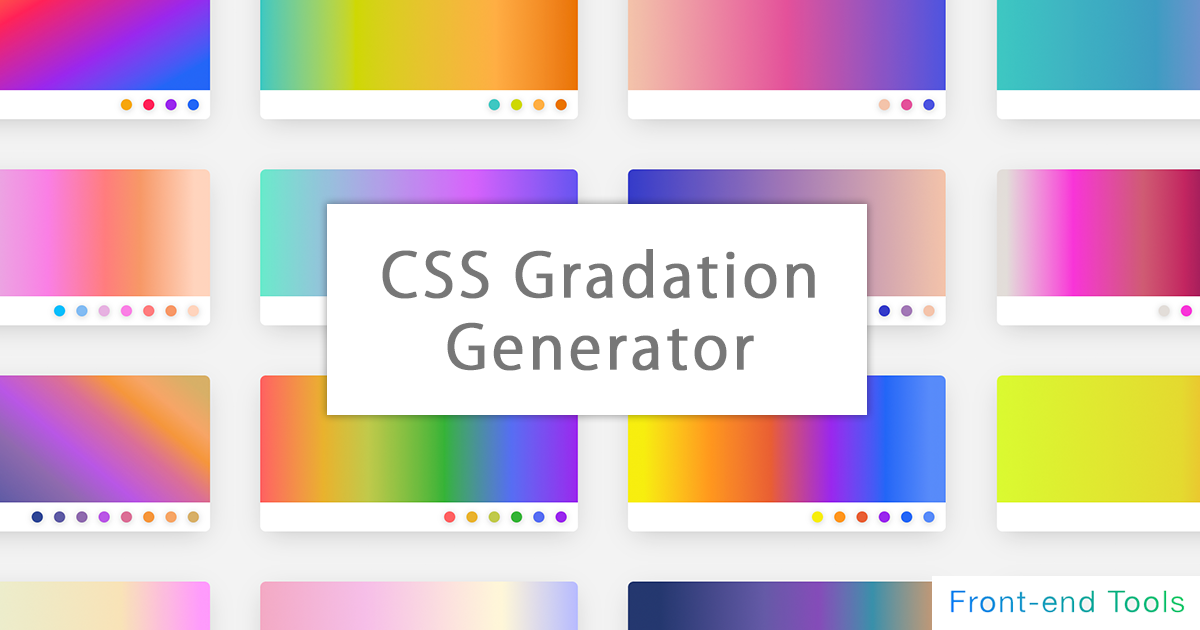
CSS Gradation Generator
It is a generator for applying a gradation to the background.
It supports linear-gradient, radial-gradient (circular), conic-gradient (fan shape), etc. of basic (linear) gradation, and can generate gradation intuitively.
Since it also supports the specification of multiple gradations, it is also possible to generate a color that mixes multiple gradations by making the specified color of the above gradation transparent.
In the circular / fan-shaped gradation, in addition to preparing a tool for intuitively operating the center position, it is also equipped with a function that can intuitively operate the angle (deg) of the linear / fan-shaped gradation. I am.
It also supports repeated gradations.
You can also select and customize from over 70 types of samples!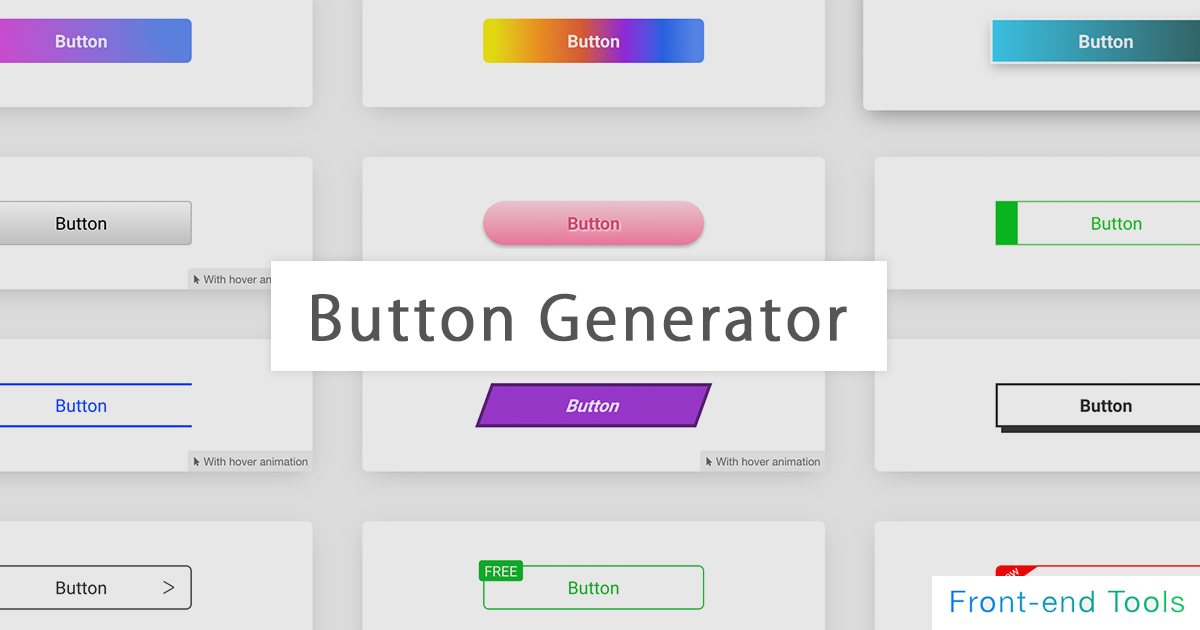
CSS Button Generator
It is a high-performance automatic button generation tool that allows you to create buttons intuitively.
Background color, background gradation, button shadow (box-shadow), character shadow (text-shadow), size (width, height), border (border), rounded corners (border-radius), It corresponds to transition (animation) etc.
Since it also supports pseudo elements (before, after), mouse hover (hover), and pseudo elements after mouse hover, it is possible to generate buttons with various designs.
20 types of samples We have the above!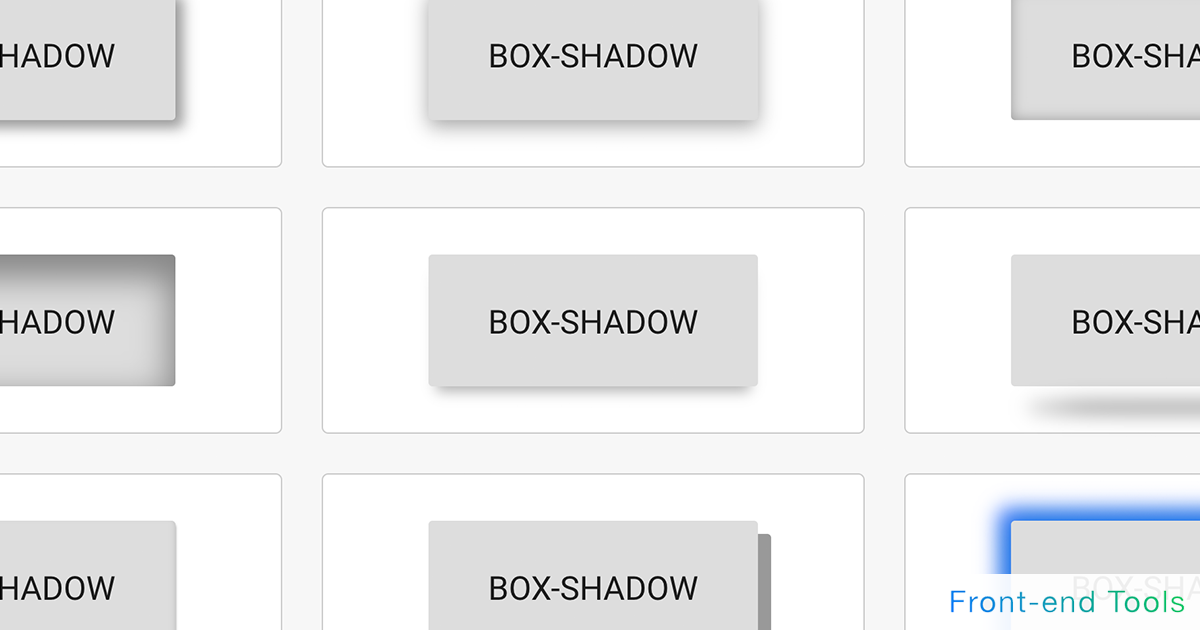
CSS Box Shadow Generator
A box-shadow tool that allows you to add shadows to images and elements.
You can choose from a wealth of samples and customize them.
It also supports the generation of inner shadows (inset) and multiple shadows. It also supports pseudo-elements such as before and after.
Pneumophysism samples are also available.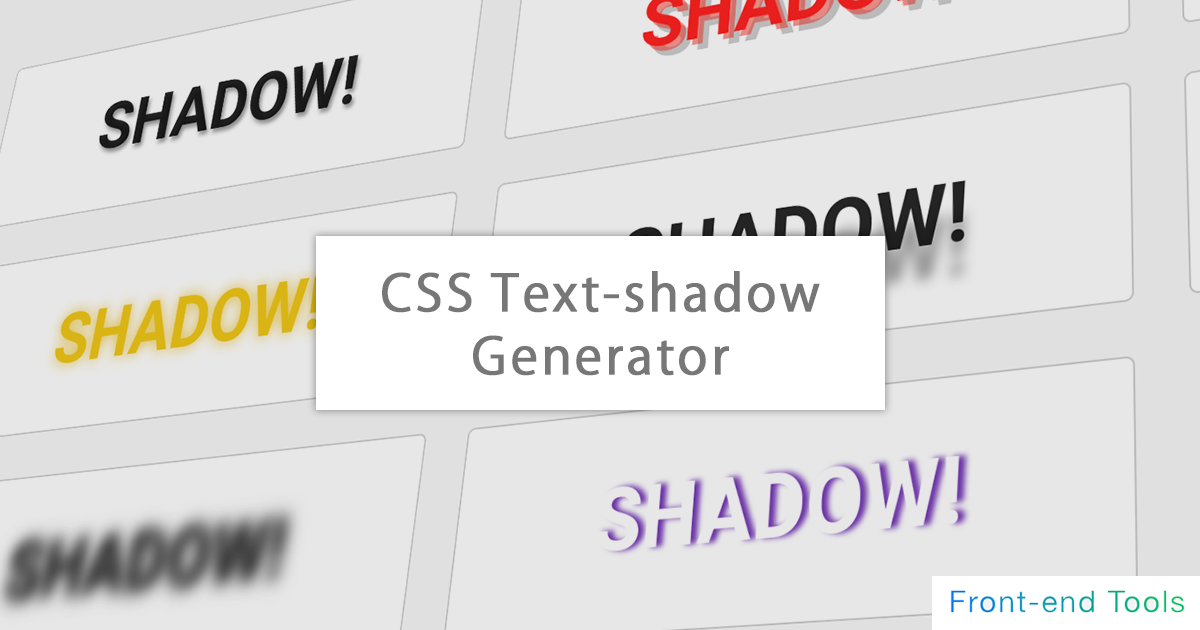
CSS Text Shadow Generator
It is an automatic text-shadow generation tool that can add various shadows to characters.
You can choose from a wealth of samples and customize them.
You can try various designs by supporting real-time text changes and multiple shadows.
CSS Border Generator
It is a CSS automatic generation tool for adding a border.
In addition to being able to specify up, down, left and right individually, you can also generate dotted lines, dashed lines, double lines, and three-dimensional lines (groove / ridge / isnet / outset). increase. You can also specify the preview size (width / height) and rounded corners (border-radius)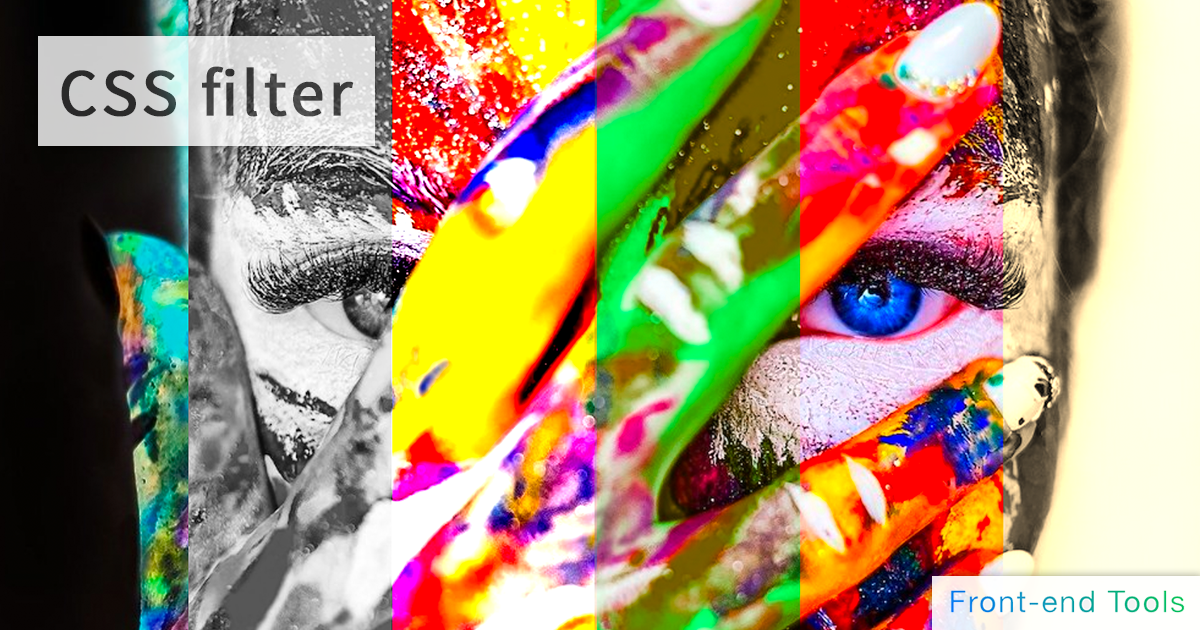
CSS Filter Generator
A css filter tool that makes it easy to implement effects on images and elements.
Blur, brightness, contrast, grayscale, hue-rotate, invert, saturation, sepia, shadow. You can specify multiple (drop-shadow) and so on.
For those who do not know how to use it, we have prepared a sample of css filter
Also, you can switch between multiple sample images and HTML elements as a preview, and upload your own image temporarily. You can also preview it!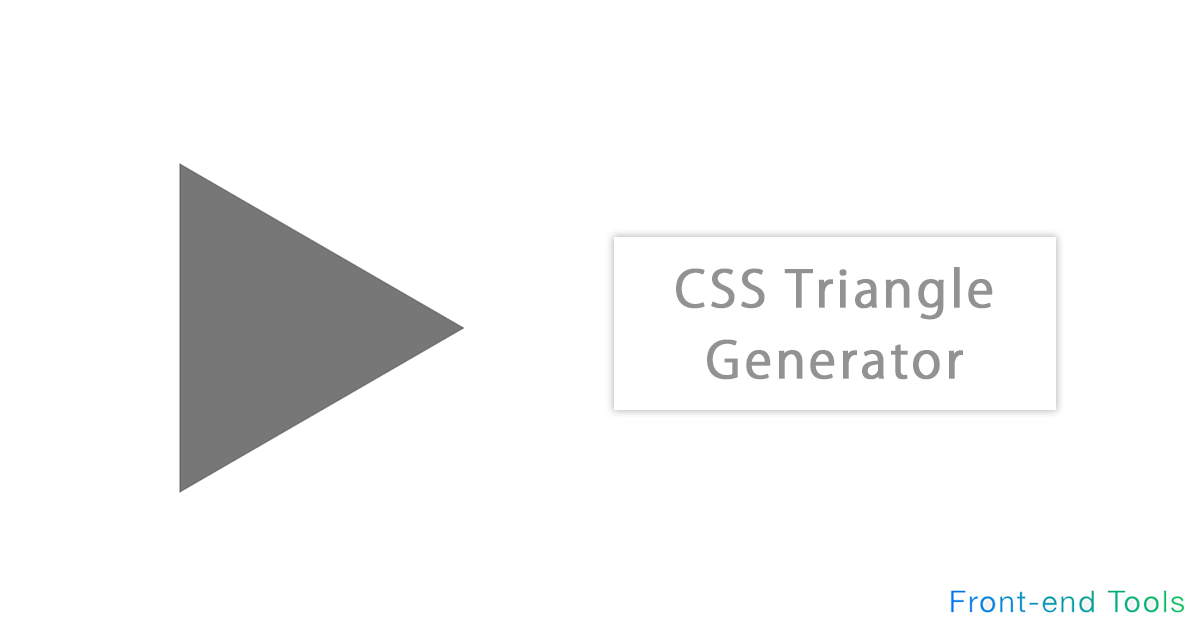
CSS Triangle & Arrow Generator
It is a generator to create a triangle with only HTML and CSS.
Arrows are automatically generated by using CSS border. All directions of 360 degrees can be specified other than up, down, left and right
In addition to being equipped with a function for automatically calculating equilateral triangles, the colors can be changed freely.
Please use it for balloons and flowcharts.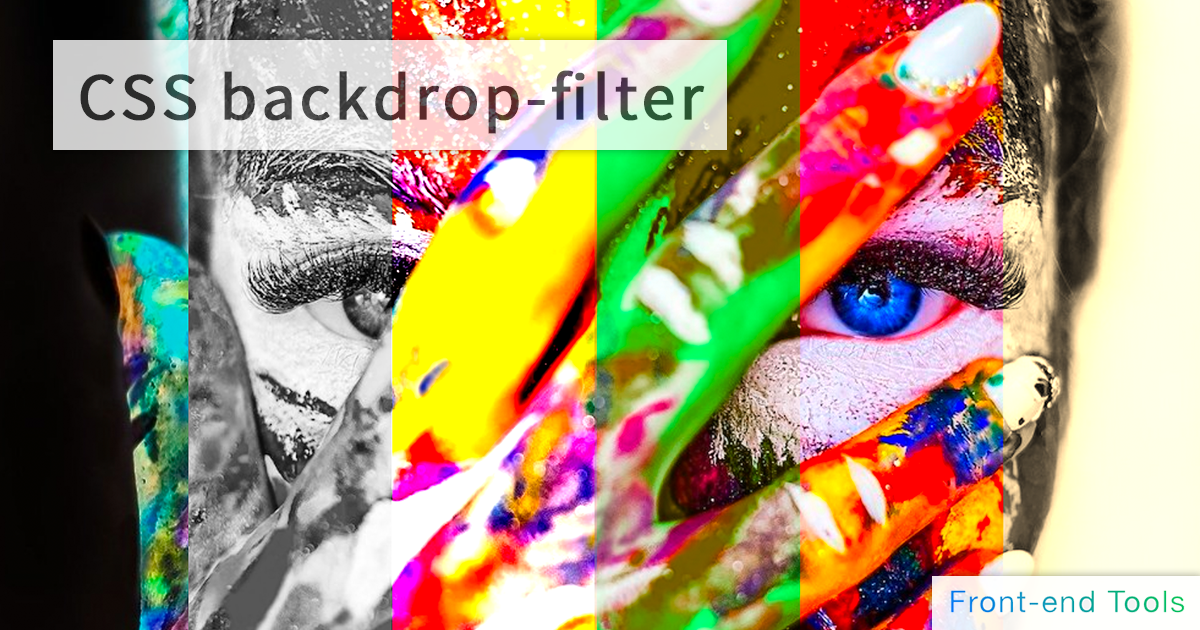
CSS Backdrop-filter Generator
A back drop-filter tool that allows you to implement an effect behind a specified element.
Blur, brightness, contrast, grayscale, hue-rotate, invert, saturation, sepia, shadow. You can specify multiple (drop-shadow) and so on.
For those who do not know how to use it, we have prepared a sample of css filter
Also, you can switch between multiple sample images and HTML elements as a preview, and upload your own image temporarily. You can also preview it!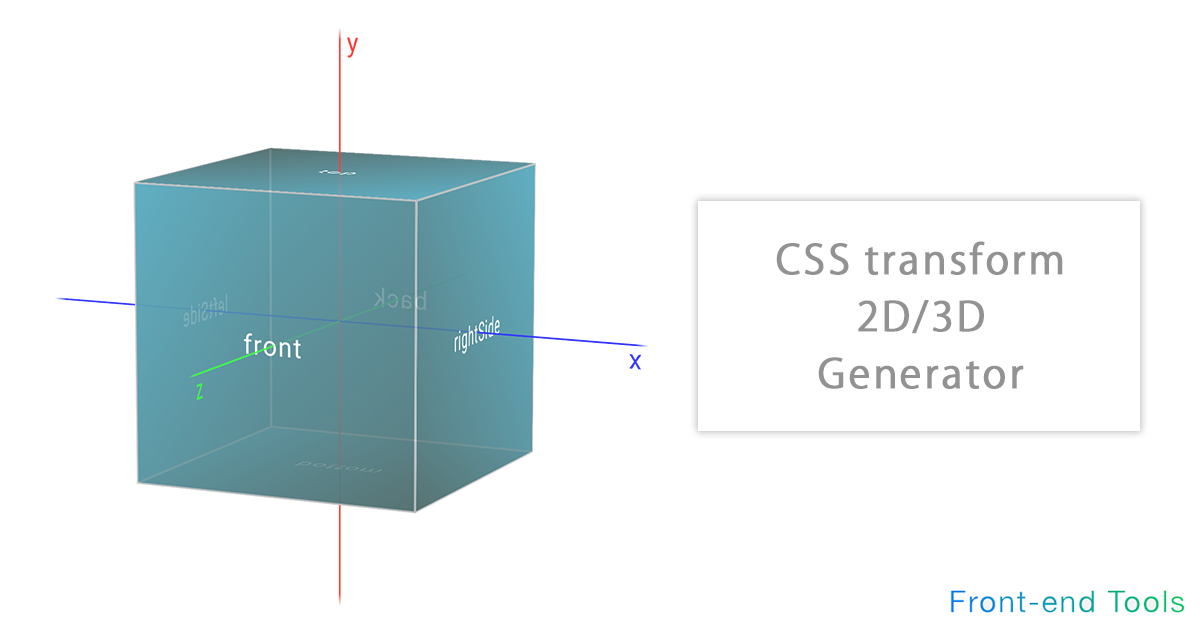
CSS Transform 2D/3D Generator
It is a tool for simulating the execution result of trasnsform with intuitive operation.
Translate (move), rotate, scale (enlargement / reduction), skew (distortion) can be intuitively operated in 2D / 3D direction. It also supports transform-origin (rotation axis), perspective (perspective / viewpoint), perspective-origin (vanishing point).
In addition, the target element and the original X, Y, Z axes can be visually displayed.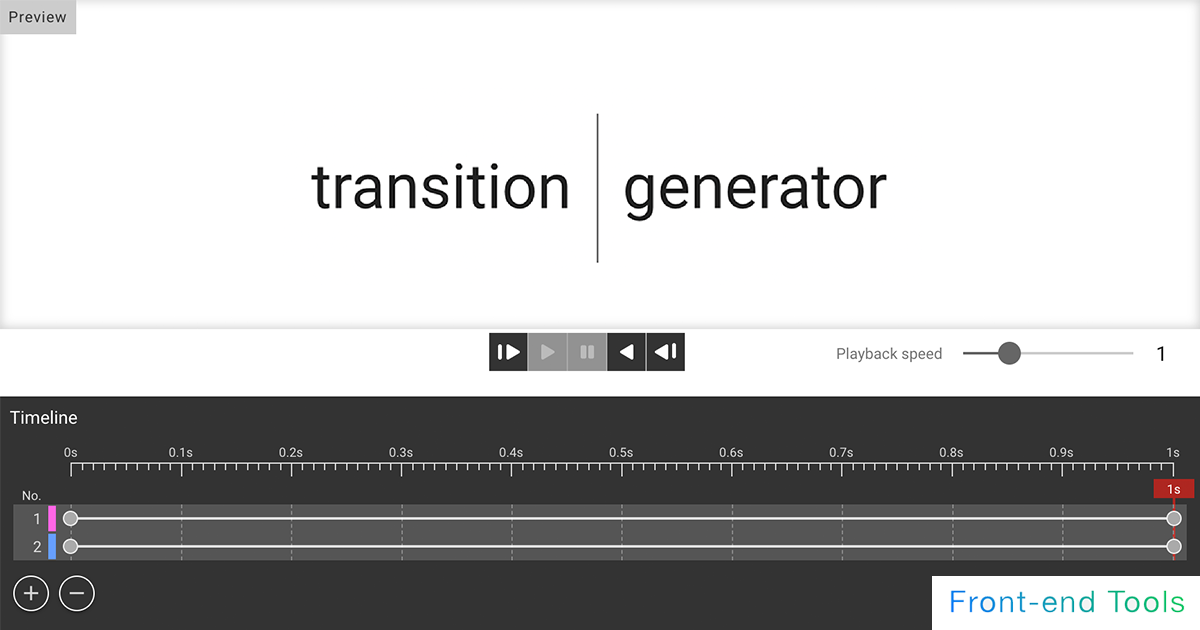
CSS Transition Generator
A transition generator for simple animations.
Supports easing, duration, delay, etc. You can select from the samples and edit them. You can finely set the style before and after the animation, so you can use it as a simulation of transition.
You can also change the reverse playback and playback speed of the animation. You can also stop in the middle or simulate the state of the element at any elapsed time.
CSS Animation & Keyframes Generator
A tool for CSS animations. Supports easing, duration, delay, etc.
List of other Tools
Description of each CSS property
- filter
- filter allows you to apply an effect (graphic effect) to an image or element. The following values can be specified
- blur
- brightness
- contrast
- grayscale
- hue-rotate
- invert
- opacity
- saturate
- sepia
- drop-shadow
Multiple filters can be specified, and if more than one is specified, they are separated by a single-byte space.
If multiple filters are specified, they are applied in the order in which they are specified.
Example description) filter: blur(3px) saturate(120%);
The default value is none.
You can also apply the same thing twice. For example, filter: blur(3px) blur(5px).
It can also be animated with CSS by combining it with hover, etc.Details of each item are as follows- blur: Blurs the element. The unit cannot be %. Gaussian Blur (Gaussian Blur, Gaussian Blur, Gaussian Filter, Gaussian Filter) is used for the value. The specified value defines how many pixels on the screen will blend into each other.
- brightness: Adjusts the brightness of the element. Can be lightened or darkened; a value of 100% (or 1) will leave the input unchanged; a value of 0% will result in a completely black image; a value greater than 100% can also be specified; a value of 0 will result in a black image.
- contrast: Adjusts the contrast of an element: a value of 0% produces a completely gray element; a value of 100% produces no change; a value greater than 100% produces a display with a higher contrast ratio.
- grayscale: Makes the element grayscale (monochrome); 100% makes it completely grayscale; 0% makes no change.
- hue-rotate: Rotates the hue of the element; 0deg will result in no change; values greater than 360deg will result in a wrap around (420deg will result in 60deg).
*Hue is one of the three attributes of color (hue, lightness, and saturation), which characterize colors such as red, orange, yellow, green, blue, sky blue, and purple. - invert: Inverts the color of the element; at 0% there is no change; at 100% it is completely inverted.
- opacity: Specifies the transparency of the element; a value of 0% makes it completely transparent; 100% makes no change; the result is the same as the CSS opacity property, except that some browsers provide hardware acceleration to improve performance.
- saturate: Changes the saturation of the element; at 100% there is no change; values closer to 0% decrease saturation and values above 100% increase saturation; a value of 0% results in achromatic color.
- sepia: Makes the element sepia-toned; 0% makes no change; 100% makes it completely sepia-toned.
- drop-shadow: Specifies a shadow for the element, similar to box-shadow, but inset cannot be specified. It then generates a shadow along the form of the element. For a PNG image with a transparent background, a shadow is generated along the non-transparent areas. Multiple shadows can be specified. Specifically, an alpha mask of the input image in a specific color, staggered and blurred, is composited under the image. Some browsers display with hardware acceleration to improve performance.
A total of four values can be specified, such as drop-shadow(horizontal displacementvertical displacementshadow blur amountshadow color)
Example description) filter: drop-shadow(5px 4px 3px #555);
- color
- When specifying colors on the Web, "HEX," "RGB," and "HSL" are often used.First of all, HEX, which you see most often (hexadecimal number), is a way of expressing colors in hexadecimal. It is expressed in the form of #1234ab.
The six digits after # are the values of red (1st~2nd digits), green (3rd~4th digits), and blue (5th~6th digits). Various colors are represented according to the color intensity of each value.
If each of the two digits is the same value, a three-digit expression can be used. For example, #aa9933 can be represented as #a93.
If you want to specify the transparency in hexadecimal, you can use an 8-digit number, with the 7th to 8th digits also in hexadecimal. 80% transparency can be specified with #aa9933CC, for example.RGB, like HEX, is capable of representing colors in red, green, and blue.
Each value can be specified in the range 0 ~ 255 and is represented as rgb(red value, green value, blue value).
Example description) rgb(10, 50, 220)
If you want to specify transparency, you can use rgba(red value, green value, blue value, transparency(alpha)).
The alpha value can be specified in the range 0~1, for example rgba(0, 0, 255, .5).HSL stands for Hue, Saturation, and Lightness.
When specifying colors in HSL, colors are specified using these three elements. Once the hue (type and shade of color) is determined, colors can be determined by adjusting saturation and lightness, which is more intuitive than RGB.
The following can be specified: hsl(hue, saturation, lightness)- Hue:Basically, you can specify a number between 0 and 360. If you specify a number beyond this range, it will be considered as a circumference, so for example, if you specify 380, it will be the same as 20.
- Lightness:You can specify a value between 0 and 100%; the closer to 100%, the brighter the image. Conversely, the closer the value is to 0%, the darker it becomes.
alpha values can be specified from 0 to 1, for example, hsla(80, 80%, 50%, .5).